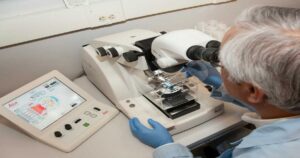Today, we will discuss the crucial featuresof electronic health records (EHR) in rural hospitals. However, before listing out the key components, let us first understand what EHR is and how it can help the smooth functioning of medical treatment in a rural setup.
1. Knowing the Basics!
As the name suggests, an electronic health record is a computer file that stores a patient’s medical history, such as diagnosis, treatment, test results, etc. In short, an EHR is a digital version of a patient’s paper health record. It also includes previous appointments, billing details, and other general documentation. The need for an EHR popped up due to its easy and secure availability compared to patients’ paper files. In addition, patients and doctors can easily access lab reports through an EHR that is updated in real-time and downloaded on any device with an internet connection.
2. Importance of EHR in a Rural Setting!
Healthcare Information and Management Systems Society (HIMSS) defines EHR usability as “The effectiveness, efficiency, and satisfaction with which specific users can achieve a specific set of tasks in a particular environment.’ In essence, a system with good usability is easy to use and effective. It is intuitive, forgiving of mistakes, and allows one to perform necessary tasks quickly, efficiently, and with a minimum of mental effort.”
A patient’s electronic health records can be beneficial in an era of digitization. It can improve patient care by minimizing the chances of medical errors, reducing test duplication, and making doctors and patients well-informed by fetching medical records anytime, thereby reducing delays in treatment.
3. Features That an EHR Must Have in a Rural Area
- EHRs can prove beneficial in all areas situated far off by accessing the real-time, up-to-date data of patients’ health records and making timely decisions. When the distance between the clinics and specialists is more, an EHR report can easily be sent to look into a patient’s history before delivering treatment.
- In a rural setup, EHR helps promote health awareness as patients’ data can be monitored without needing to be physically present. Software-as-a-Service (SaaS) Solutions can be easily deployed in places with slow internet and help maintain a lightweight EHR that can support immediate patient care and easy documentation.
- Next comes the option of configuration over coding. At the Rural Health Clinic (RHC), an EHR that the local IT team can handle would be of more use than one that may require a specialist’s check or additional coding. An EHR, equipped with the ability to configure and customize as per the clinic’s workflow, will give more control to the RHCs and enable them to function efficiently.
- Another significant point of an EHR in a Rural Health Clinic will be the inclusion of applications that support instant communication, like Telehealth and patient portals. These applications enable direct consultation and virtual care of patients and specialists located far off, thereby reducing the dependency of RHCs on city or urban-based facilities.
- When we are discussing rural hospitals, we need to look for an application that is both affordable and functional, as rural areas mostly struggle with problems regarding budget and resources. Hence, keeping this in mind, RHCs should install a cloud-based EHR that does not require buying servers or employing IT staff.
- RHCs must use an EHR application with innovative analytic tools to access and develop reports for quick patient care decisions. In addition, the system must be able to pull large chunks of data and generate reports daily.
Enjoyed reading this? Want to read more related articles? Click the link for more information!
Happy Reading!



